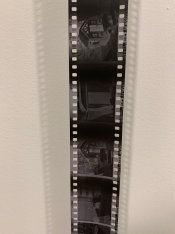Hi there! I recently purchased a Minolta XD-11, which was in decent shape, but after shooting my first roll with it, I noticed black bands on the negative, but attributed them to human error (it was my first attempt at developing a film at home in 20+ years, I figured I may have done something wrong). However, upon shooting another roll with it, I'm seeing a very similar pattern. The weird thing is that, it's mostly affecting the beginning and the end of the roll, whereas the middle section isn't too bad.
I've attached 2 pictures to show what it looks like, the first one is one end of the roll (the other end is similar) and the other is the middle, where the black bands are a lot less subtle.
After some googling, it looks like the camera might suffer from light leaks? Anything else that could explain this? Does it make sense that the problem would be more obvious at both ends of the roll but not the middle? Any help would be appreciated!
Ends of the roll

Middle of the roll

I've attached 2 pictures to show what it looks like, the first one is one end of the roll (the other end is similar) and the other is the middle, where the black bands are a lot less subtle.
After some googling, it looks like the camera might suffer from light leaks? Anything else that could explain this? Does it make sense that the problem would be more obvious at both ends of the roll but not the middle? Any help would be appreciated!
Ends of the roll

Middle of the roll












